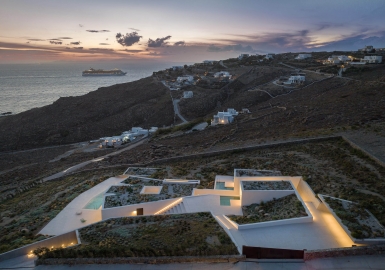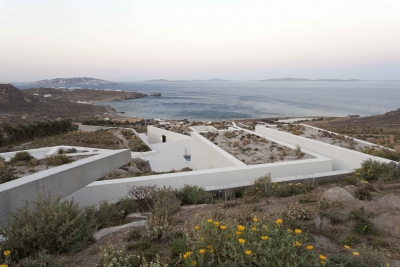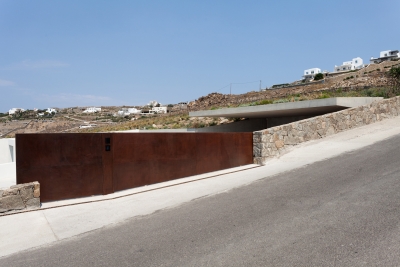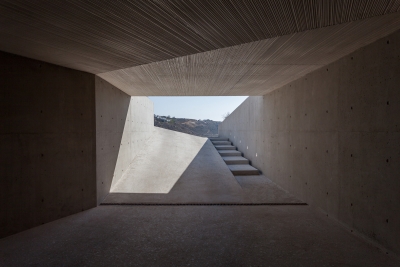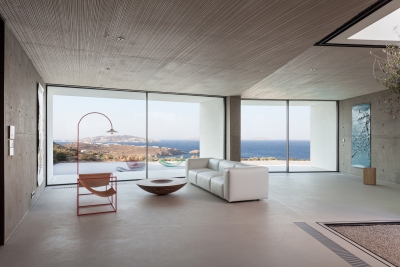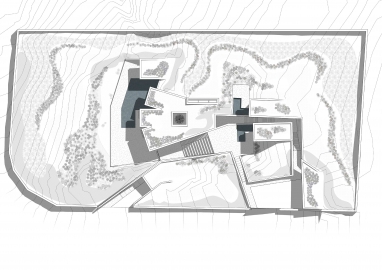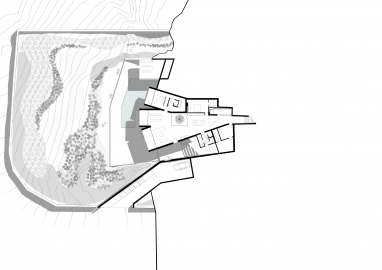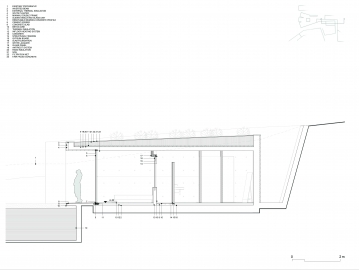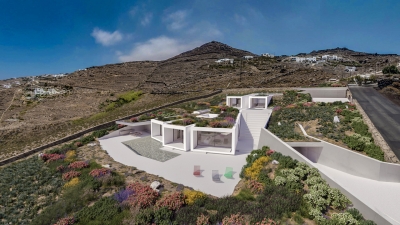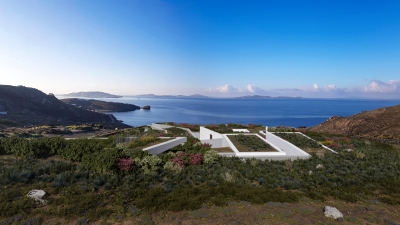Latypi Residence
In a plot with significant slope and south orientation, located in Choulakia, Mykonos and overlooking Delos and Rineia islands, we decided to create partly subterranean residence on two floors. The goal is the least possible alteration of the natural landscape in combination with the reassimilation of the local vegetation in the intervention areas.
The above-ground part of the residence amounts to 120m2, while the subterranean part is approximately 130m2. From the very beginning, the building was perceived as an element of a greater project which included all 4000 m2 of the plot. The aim was to weave both the hardscape and softscape of the building into the natural Mykonian landscape. As a result, the entity that was created is not visible from the street.
The Latypi project converses with the archetypical architectural legacy as well as the Cycladic terrain, situating itself as a contemporary intervention within the landscape. The concept has been inspired by the local sculptural tradition, which has produced timeless artworks throughout the centuries.
The intention to have the outdoor space emerge as the focal point of the building complex (an age-old Greek practice) is instantly legible.
At level +0.00 (64m above sea level) all the spaces are developed around an atrium. In the center, an unyielding olive tree with roots deep in the Mediterranean landscape functions as an element of memory.
This section of the building comprises the main living areas, as well as two sleeping areas, one with direct access to the courtyard and swimming pool, and a second one, the natural lighting of which is achieved through a well of light.
On the same level, an outdoor amphitheater of approximately 60 seats is facing the sacred island of Delos.
At level +4.00 the second section of the residence is developed, almost exclusively underground, and consists of two bedrooms and ensuite bathrooms. This section is connected to the main building via a 2.00m wide, open-air promenade.
It is sheltered by a planted roof and has a southern orientation overlooking the Aegean Sea. The outdoor parking spaces are also covered with a planted roof so that the presence of cars is not detectable from above.
The landscape design is based on the existing natural terrain, borrowing from its elements, and reinterpreting the variety, textures, and colors of native plants to create a new palette.
The project was designed with respect to its environment trying to use different qualities of sustainability. According to our firm’s values the issue of sustainable construction should be tackled from a life-cycle point of view.
Thus, cast in-situ concrete was used as the main structural material. Moreover, the thermal mass of concrete is used to avoid or reduce temperature swings in the building. Concrete walls and floors are effective storage heaters, absorbing free heat from the sun during the daytime and releasing heat at night. Dense concrete provides the highest amount of thermal mass.
Additionally, all the exterior walls are coated with thermal insulation and white color plaster, reducing the heat gain from the sun. Adding to this, cross ventilation is also used as a boosting technique for passive cooling.
Furthermore, the building complex has a green roof, providing shade and insulation that results in energy savings. Lastly, we hope that our green roof can become a way to reclaim habitat that was lost as a result of construction while improving its aesthetic value.

